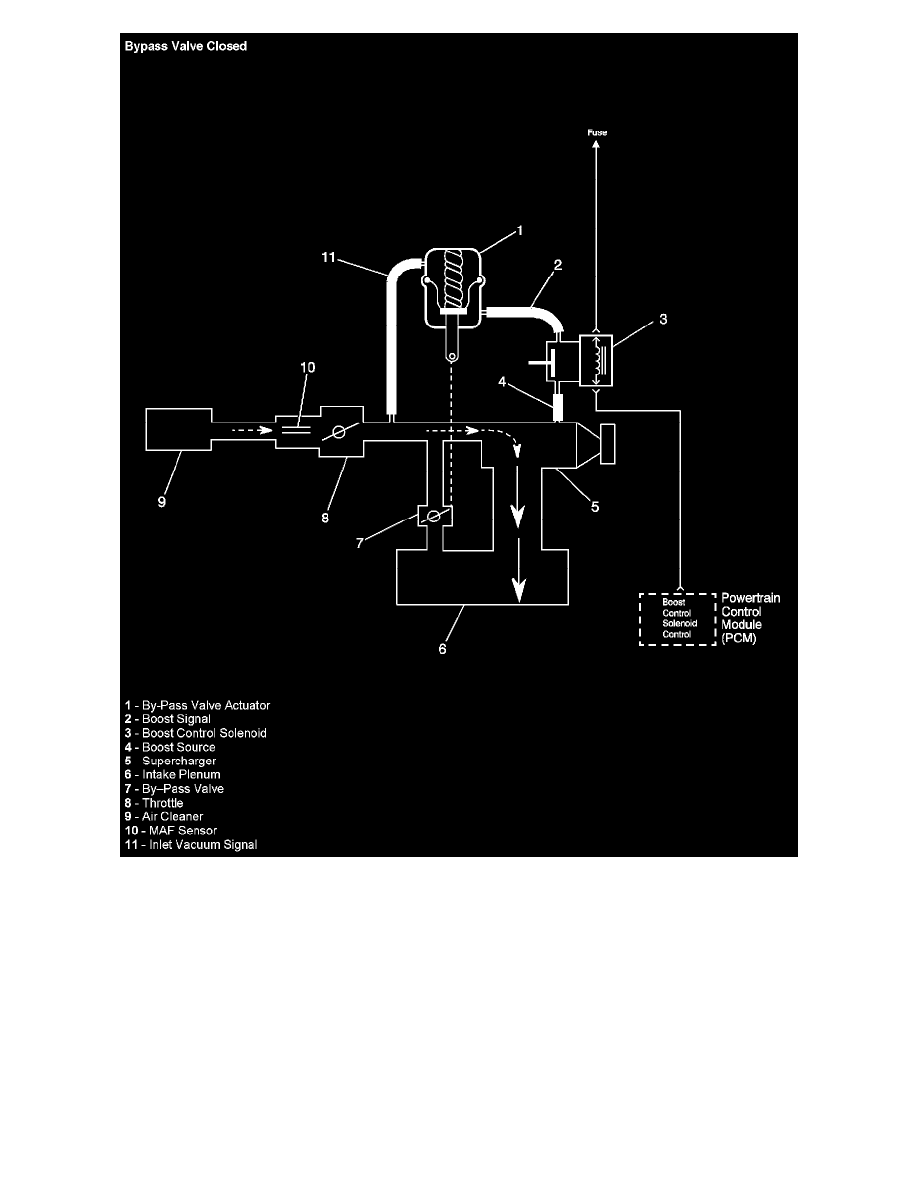Cobalt L4-2.0L SC VIN P (2005)

Bypass Valve Closed
Supercharger boost pressure is regulated to prevent engine and drive train damage. When the engine is operating under high boost conditions, the
powertrain control module (PCM) limits boost pressure to 83 kPa (12 psi). The PCM disables boost under the following conditions:
-
When reverse gear is selected
-
When the engine coolant temperature (ECT) is excessively high
-
When drivetrain abuse is detected
-
When the vehicle is decelerating
-
If an intercooler pump failure is detected
-
If the intake air temperature (IAT) sensor 2 becomes excessively high
-
Under heavy load in first and second gear at engine speeds above 5,800 RPM
The PCM controls boost pressure by using the boost control solenoid. The boost control solenoid is normally an open valve. Under most conditions,
the PCM commands the boost control solenoid to operate at a 99-100 percent duty cycle. This keeps the solenoid valve closed and allows only inlet
vacuum to control the position of the bypass valve. At idle, engine vacuum is applied to the upper side of the bypass valve actuator, counteracting
spring tension to hold the bypass valve open. As engine load is increased, engine vacuum is decreased, causing the spring in the bypass valve actuator
